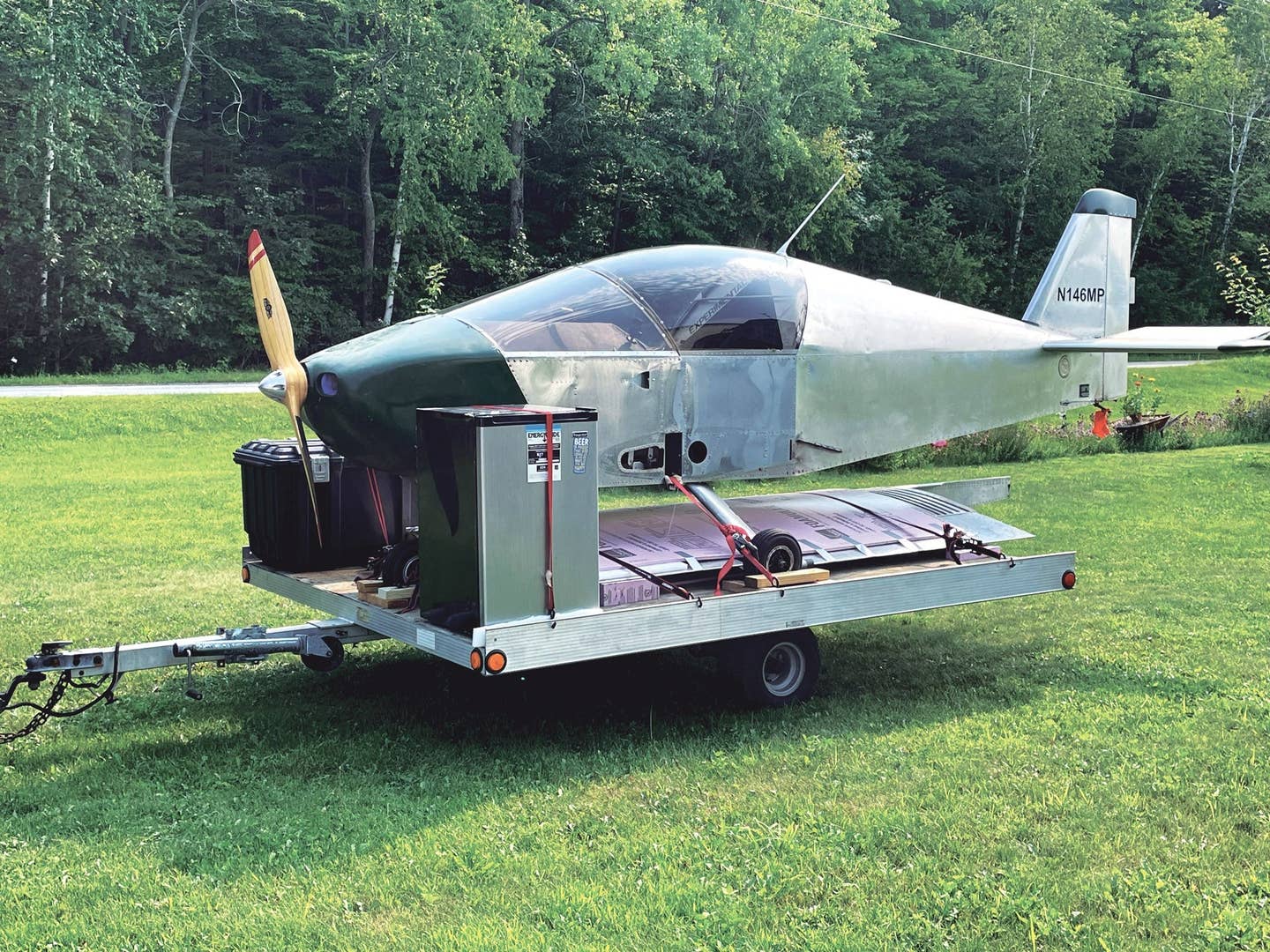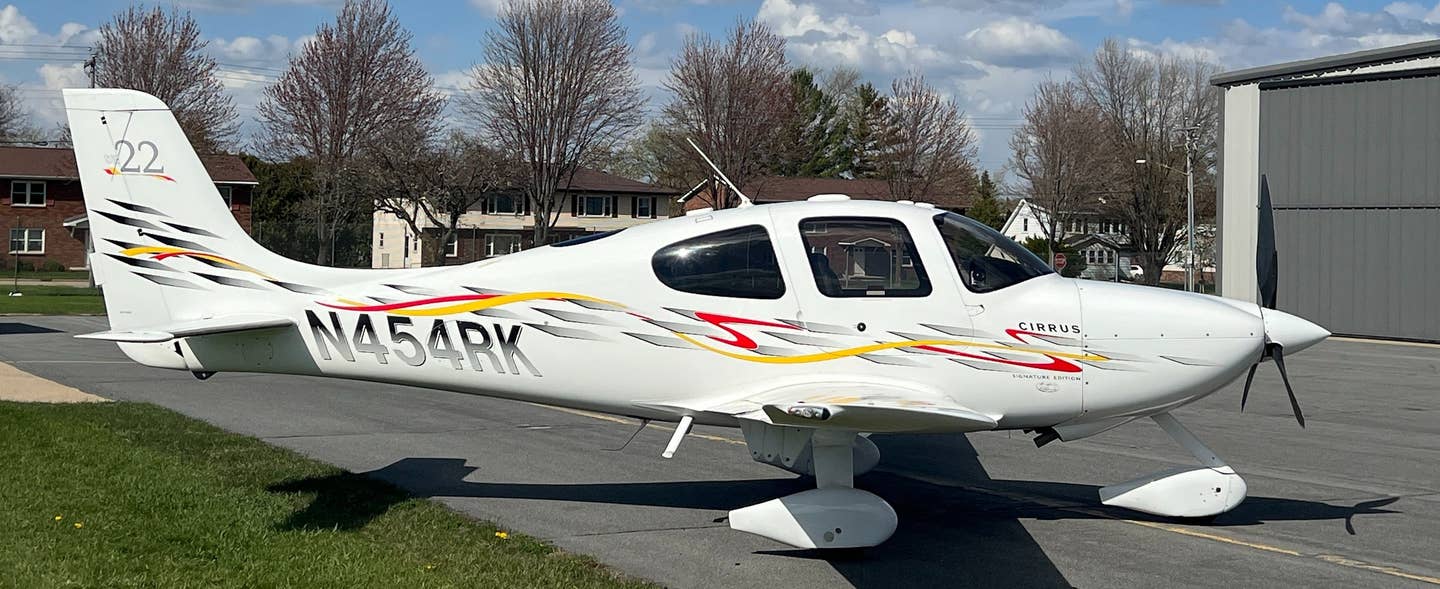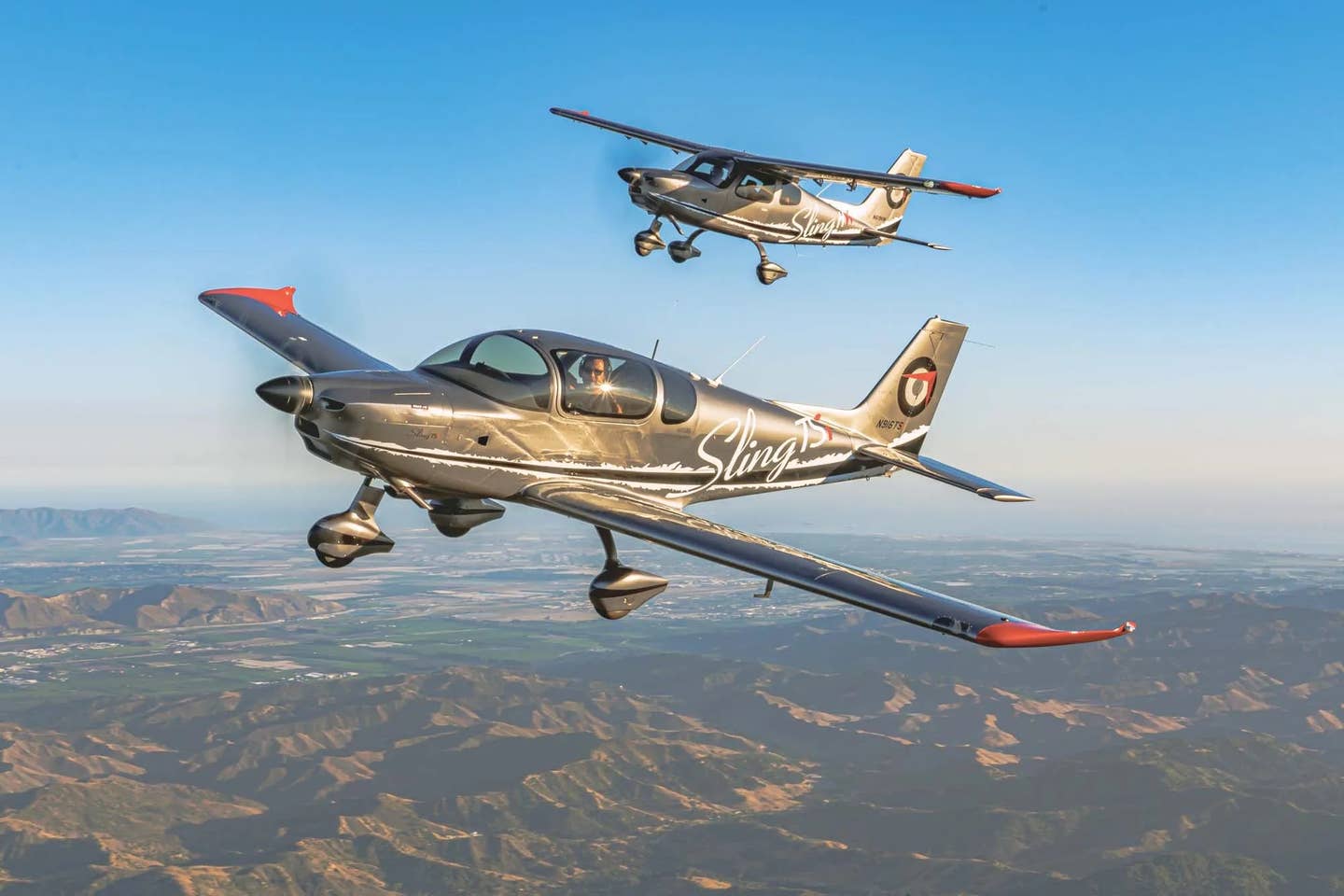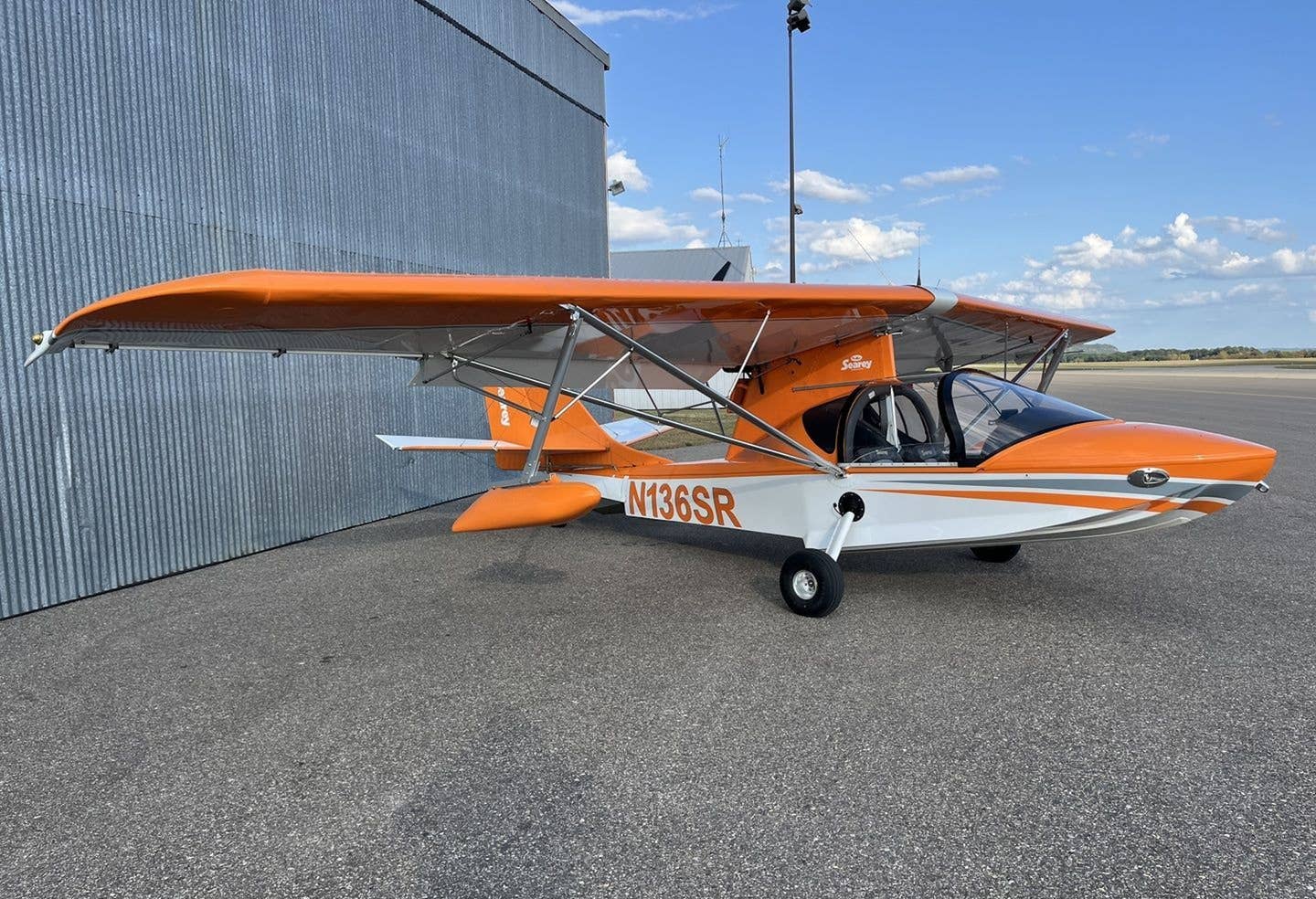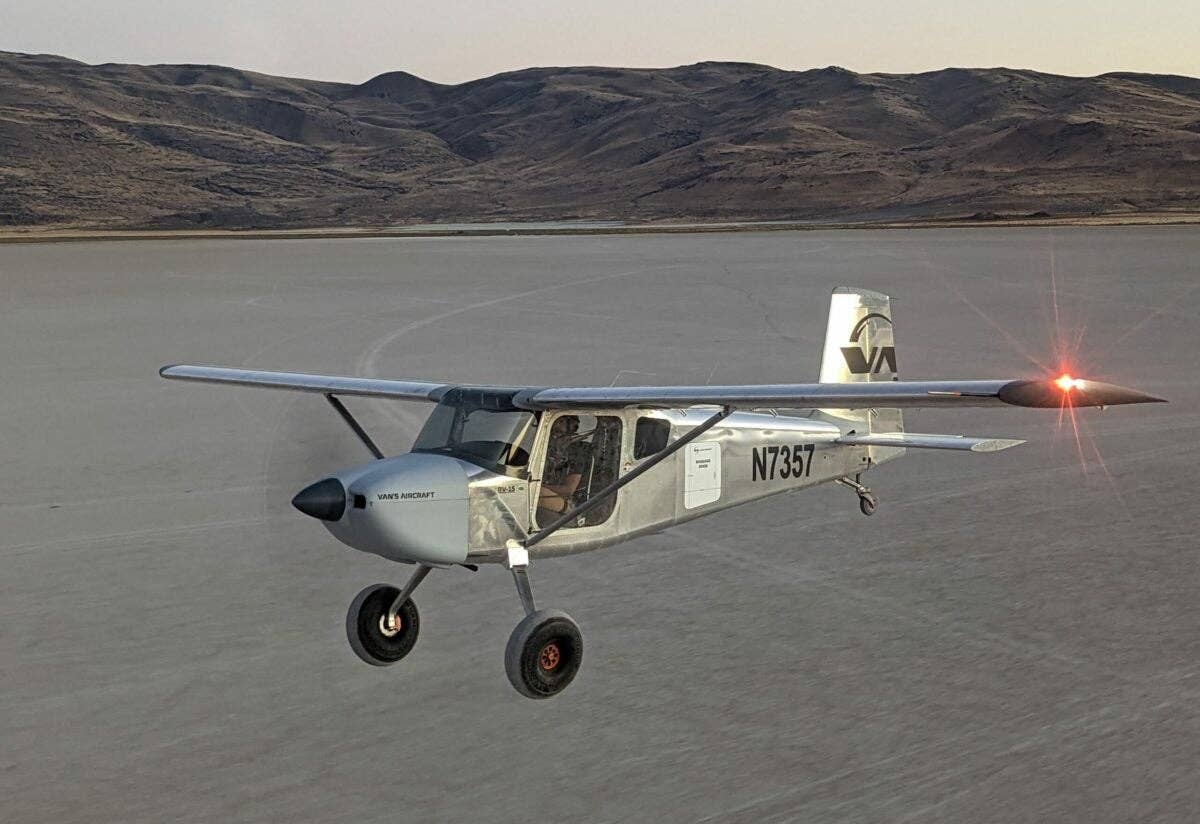The Piper Tomahawk: A Lot More Airplane for a Lot Less Money
With a T-tail and stall-spin nuances, this model rewards proper technique with a modern design.

[Photo: Mark Kolanowsky]
Deciding on an airplane type with a limited budget is an exercise in balancing strengths and weaknesses. One type might provide great cruise speed or pay-load, but less expensive examples might come at the cost of a high-time engine or old fabric. For the same price, it might be possible to find a different type that has been freshly restored with a low-time engine, although chances are, it will have fewer seats and less capability.
But what if one type’s perceived weakness is some-thing that can be addressed with awareness and ap-propriate training? In the case of the Piper PA-38Tomahawk, its unique stall and spin characteristics resulted in accidents and a poor reputation early in its production run. The reputation lingers today, but owners agree that if one is willing to train and fly appropriately, it becomes a non-issue—and a non-issue that enables a prospective owner to obtain a lot more air-plane for a lot less money than other types.
Design
Back in the late 1970s, the field of training aircraft was dominated by legacy types that traced their designs back to the 1930s and 1940s. The popular Cessna 150and 152 were based upon the old 140, Cubs and Aeroncas had changed little over the years, and—whether equipped with a nosewheel or a tailwheel—most trainers also had high wings, cramped cockpits, and limited visibility.
When Piper set out to claim market share from Cessna in the primary trainer category, it took a fresh approach. Rather than build an updated Cub or a smaller Cherokee, Piper surveyed thousands of flight instructors across the country to determine what characteristics were most desired in a training aircraft. It solicited input on what features the perfect one should have and how it should fly. The instructors provided plenty of input.
Having spent decades in cramped cabins, they asked for more space and comfort. Having dealt with huge blind spots in the form of a high wing positioned at eyelevel, they asked for more visibility. And they wanted an airplane with a sharper, more pronounced entry into stalls and spins. They reasoned that a student cannot fully understand or properly learn spin recovery in an airplane that will automatically return to normal flight when the controls are released.
Piper got to work and created an airplane that me teach of these demands in the form of the Tomahawk. It built the airframe around the popular 112 hp, four-cylinder Lycoming O-235. Although the low-wing de-sign necessitated a fuel pump, Piper positioned the fuel selector in a location on the panel that’s both easy to see and easy to reach. And, like so many other models in that era, they opted for the style of a T-tail.
Model History
The result of the research was a new training air-craft that was thoroughly modernized and differentiated from the legacy trainers of the day. In the end, Piper would sell nearly 2,500 examples between 1978and 1982.In those four years of production, the Tomahawk line remained simple and uncomplicated. The vast majority of Tomahawks are the initial model, known simply as the PA-38 Tomahawk. During the last two years of production, Piper introduced the Tomahawk II variant, with minor improvements to the cabin: heating, ventilation, and soundproofing. The company also made a few smaller improvements to the interior to provide more comfort to those on board.
Market Snapshot
A survey of Tomahawks listed for sale at the time of this writing found eight examples ranging in price from $25,000 for a particularly rough example to $69,000 for one with a freshly overhauled engine and updated avionics. The median price of the group was $30,500, and the median airframe time was 3,717 hours. A total of 444 Tomahawks are presently listed on the FAA registry.
Because many Tomahawks have been used for flight training at busy schools, it pays to be discerning. Air-frame total time is something to note, as is the condition of an aircraft that might have led a hard life at the hands of primary students. However, an airplane that has been used regularly over the years tends to accumulate fewer issues in general than one that has been a hangar queen, so don't discount a former school model.
Flight Characteristics
The Tomahawk’s T-tail makes it easy to spot from across a ramp. Like the T-tails Piper fitted to the Arrow IV and Lance, it is said to have been chosen by the marketing department for its looks, but it has more drawbacks than legitimate performance advantages. A Tomahawk pilot must retrieve a ladder to perform a thorough preflight inspection, and to clear ice and snow off of the horizontal stabilizer in the winter or remove bugs from the leading edges in the summer.
Fortunately, the Tomahawk’s other design elements offer legitimate benefits that are immediately apparent. If the cabin size and layout of the Tomahawk had been the accepted norm and the competition had all waited until the late 1970s to introduce their cramped cabins with limited visibility, their airplanes might not have done so well in the marketplace. Indeed, the Tomahawk’s roomier cabin feels downright luxurious compared to an early taildragger or Cessna 150, and the outstanding visibility comes as a pleasant shock to everyone except possibly Ercoupe pilots.
Most two-place trainers endowed with engines in the 100-hp range require discipline with regard to loading, and the Tomahawk is no exception. With full fuel, anyone much over 150 pounds would be wise to consider the weight of the other occupant before de-parting—a survey of 18 owners found that the aver-age full-fuel payload was 303 pounds. Fortunately, the 30-gallon fuel capacity is larger than that of many competing models, and this provides some flexibility with regard to payload.
After settling in, a Tomahawk pilot will find that most controls are well-designed ergonomically, botheasy to see and reach. Taxiing is straightforward and the nosewheel steering is positive and responsive.
A pilot unfamiliar with a T-tail would be wise to re-view its nuances prior to flight. Because the horizontal stabilizer and elevator are positioned outside the propeller slipstream, the elevator takes more time to be-come effective, and thus, a bit more time and distance is required to raise the nosewheel for a soft-field takeoff.
If the pilot continues to hold full nose-up elevator as the nose rises, they might be startled when the horizontal stabilizer enters the slipstream, instantly gains effectiveness, and sends the nose abruptly upward. This stems from the T-tail design itself, rather than representing a safety issue specific to the Tomahawk, and it’s easily countered after the pilot becomes familiar with the tendencies of the T-tail.
The rest of the takeoff and climb out are typical of any O-235-equipped trainer, predictable and a bit ane-mic when fully loaded. The spring-based elevator trim and the tiny trim wheel feel less effective and less precise than trim-tab based designs, but they do the job.
Most owners report cruise speeds in the 95-knot range with a fuel burn of roughly six gallons per hour. No Tomahawk review would be complete without mention of the airplane’s stall and spin characteristics. The topic of much debate over the decades, many studies and analyses have been conducted, and opinions still differ. People who have never flown them equate them to death traps, predisposed to enter and difficult to recover from spins.
Those who fly the Tomahawk understand that when designing the airplane, Piper simply gave the afore-mentioned group of CFIs precisely what they wanted—an airplane more willing to enter stalls and spins, and one that requires specific inputs to recover from them. That said, there is still debate regarding the consistency of the airplane’s stall and spin characteristics.
Master CFI Rich Stowell, who has flown more than 26,000 spins in more than 160 different airplanes, tested one Tomahawk in depth. He found that its spin characteristics were unremarkable compared with other airplanes and that the airplane performed as Piper literature states it should perform. Stowell does, however, go on to question whether the spin characteristics are truly uniform across the fleet.
The National Transportation Safety Board raised the matter of Tomahawk stall-spin characteristics formally in a Safety Recommendation to the FAA in 1997 and asked that the agency conduct an investigation and test flights. The FAA did so, and it reported in 1998 that the concerns were unsubstantiated.
In any case, owners strongly recommend seeking thorough flight instruction from an instructor who is well versed in the Tomahawk. If doubts remain about the stall/spin characteristics of a particular Toma-hawk, it shouldn’t be difficult to find a qualified instructor or aerobatic pilot to go spin the airplane and report on its characteristics.
In normal cruise flight, the Tomahawk is an enjoy-able airplane to fly. The sweeping, unrestricted visibility makes it easy to spot other traffic; it handles predictably, and the heater keeps the cabin toasty—even on frigid winter days in northern climates.
On approach, the airplane flies predictably, and the pilot can readily make changes to airspeed or profile. One mustn’t forget that T-tail during landing, how-ever—leaving some power in or landing at a higher-than-usual pitch attitude can catch a new Tomahawk pilot off guard. As on takeoff, if the horizontal stab sinks low enough to enter the propwash, effectiveness spikes and the pitch can increase abruptly. The effect is not unlike encountering a sudden wind gust. While recovery is easy and straightforward, it’s a nuance for which one should be prepared.
Ownership
Economy is one of the primary strengths of the Tomahawk. A relatively low purchase price, a 2,400 hour engine TBO, and low fuel burn keep operating costs at a minimum. Insurance is also relatively affordable. Multiple low-time owners report annual insurance premiums between $1,000 and $1,500 per year, even for new student pilots utilizing the Tomahawk for their primary flight training.
The relatively simple airframe is straightforward to repair and maintain, and lacks complicated, proprietary components that can make other types more challenging to service. With nearly 2,500 examples produced, the supply of replacement parts helps to keep Tomahawks airworthy and out of the maintenance hangar. Prospective owners are wise to care-fully review the maintenance logs of any Tomahawk they find. Not long after the type entered production, a high number of stall/spin accidents resulted in the FAA creating an airworthiness directive (AD) that requires the installation of four stall strips on the leading edge of the wing. Accordingly, every Tomahawk should have had them installed.
Other ADs introduced a life limit for certain parts. Every 3,000 hours, the vertical stabilizer attachment plate must be replaced. The part isn’t expensive but the job requires about 40 hours of labor.
The Tomahawk wing is subject to a life limit of 11,000 hours. Although this is a high number, many Toma-hawks have led a busy life of flight instruction and have correspondingly high-time air-frames. Fortunately, Sterling Aviation Technologies of Goodyear, Arizona, offers a kit that extends the spar life to at least 18,650 hours. The $4,300 kit requires approximately 64 hours of labor to install, and it’s a great alter-native to scrapping a high-time airframe.
Other ADs apply, but none require an inordinate amount of time or money to address. The majority are either one-time mods or can be resolved readily.
Few STCs are offered for the Tomahawk and thus, most Tomahawks are virtually identical from a mechanical standpoint. One STC allows for the installation of higher-compression pistons, bringing the horse-power from 112 to 125. Although the increase in power is modest, it is said to be quite noticeable. Unfortunately, the STC seems to have become orphaned and is no longer available for purchase/installa-tion on existing Tomahawks
.Although no official type group presently exists, the “Piper Tomahawk Owners” Facebook group is vibrant and full of enthusiastic owners who are eager to welcome newcomers into the fold. More information can be gleaned through the Piper Flyer Association.
Now more than ever, it has be-come difficult to find a certified, 1980s-vintage airplane in the $30,000 to $35,000 range. The Tomahawk offers relatively easy, straightforward ownership, and existing owners take every opportunity to praise their machines and recommend the type to others.
Piper Tomahawk: By the Numbers
| Price | $25,000 to $69,000 |
| Powerplant (varies) | Lycoming O-235 |
| Max cruise speed | 108 kias |
| Endurance | 5 hours at 6 gph |
| Max useful load | 505 lbs. |
| Takeoff distance over a 50-foot obstacle | 1,440 feet |
| Landing distance over a 50-foot obstacle | 1,462 feet |
| Insurance cost | Low |
| Annual inspection expense | Low |
| Recurring ADs | A couple to watch for |
| Parts availability | Good (from the OEM and others) |

Sign-up for newsletters & special offers!
Get the latest FLYING stories & special offers delivered directly to your inbox

